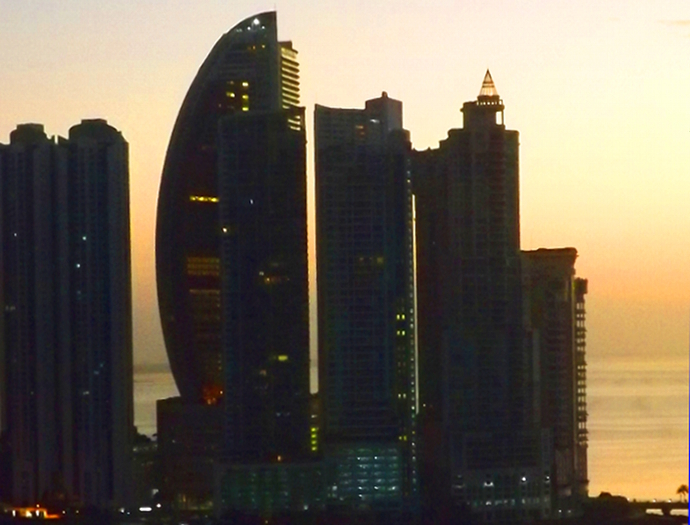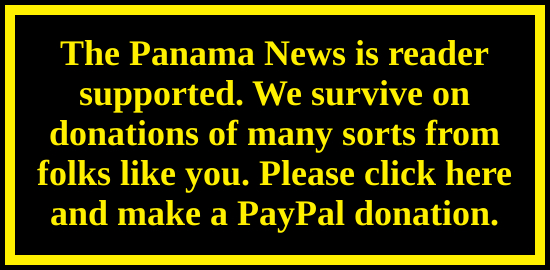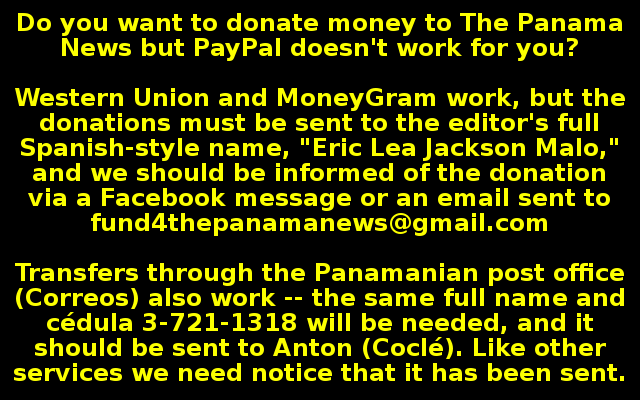Expensive and empty — a way life that makes it profitable to pay the politicians to continue. Photo by Eric Jackson.
The money behind politics here
by Marco A. Gandásegui, hijo
Whoever observes the Panamanian election campaign with a critical eye will perceive that each party and its leadership have as their goal coming to power so as to continue to enjoy the economic benefits that control of the government generates. This reality is not unique to Panama. It’s a reality that characterizes all countries whos dominant class organizes into political parties. Each political party represents a sector in the changing relationship of forces within the dominant group.
In the case of Panama, the sectors most associated with power have been, since colonial times, the rentiers of our geographical position (interoceanic transit) and the urban and suburban real estate speculators. Another very important group is the rural landowners. Industrialists also had a significant participation in the mid-twentieth century (1935 to 1980).
According to the historians, at the end of the colonial period the merchant families such as the Arosemenas, Ayalas and Icazas and others had a lot of power. When the separation of Colombia took place in 1903, the Arosemena followed and the Arias, among others, joined. The ranchers had strong interests and made themselves felt in the corridors of power.
For a century (1830-1930) the Conservative and Liberal parties predominated. The latter wanted to change the country to accommodate their commercial interests. Instead, conservatives entrenched themselves in their traditional landowner values and fortunes. Throughout the twentieth century, other interests such as industrial and large agroindustrial (Eleta and Chiari, among others) joined. The industrialists, and the working class that appeared as a consequence, put an end to the duopoly between liberals and conservatives. The Conservative Party disappeared and the Liberal Party split and disintegrated.
Currently, in the 21st century, we have new parties but the same dominant group made up of rentiers and speculators. The neoliberal policies implemented in Panama, especially after the US military invasion in 1989, swept away industrialists, agricultural interests and even many merchants. The party system, however, has not changed much. The parties operate on the basis of economic power and political patronage. Loyalty and discipline are maintained during the elections by organizing a system of bosses who respond to a party that is, in turn, led by a national leadership body.
The middle layers do not have a political party. A sector of the working class created a political party but it has had serious difficulties in attracting all the workers and other popular sectors.
As in the last 150 years, political parties are financed by powerful economic interests. In the most recent elections, it was up to the rentier and speculative groups, which control the economic power of the country, to assume the role of ‘sponsors’ of the parties and their candidates for popular election. In the past there were liberals and conservatives who fought in the electoral battles (1904-1936). Then the industrialists intervened (1936-1968) creating an internal struggle that got out of control and culminated in the military coup. The defeat of the military against the US in 1989 meant the return of the rentiers to political power, displacing others.
Who finances the seven presidential candidates? The information provided by the Electoral Tribunal offers an approximation. The numbers offer the observer with a critical eye the possibility of having an idea of what the tissues are between candidates, parties and economic power. Candidates can receive — according to the law — individual donations to their campaign up to a maximum of $100,000.
More than 50 individuals have donated more than $10,000. A total of 18 people have donated between $25,000 and $50,000. Nine other individuals have donated more than $50,000 each to candidates. Among the latter, the largest individual donations have been directed to José Blandón (4), Nito Cortizo (3) and Rómulo Roux (2).
The economic power (rentiers and speculators) are the ones that donate the most. Note that Stanley Motta has donated $99,500 to the three candidates of the traditional parties: Blandón, Cortizo and Roux. Among the other outstanding donors are Paul de Janón and Alberto Vallarino (in favor of Blandón), Alfredo Alemán and Samuel Lewis Navarro (for Cortizo) and Camilo Atala and Aldo López (for Roux).
These links are interactive — click on the boxes












